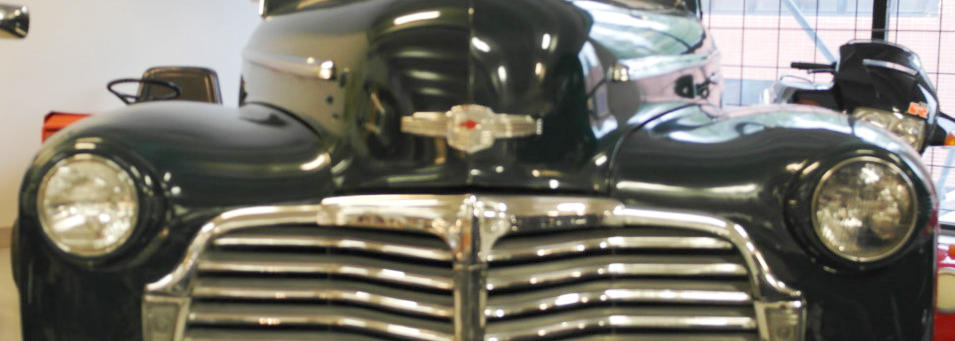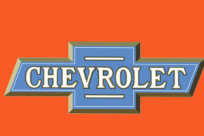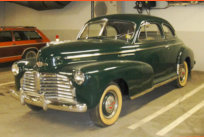



Now were in Business!

Chevrolet Deluxe
Business Coupe
The
Chevrolet
Deluxe
was
introduced
late
in
the
1941
model
year
as
a
4-door
sedan.
In
1942
a
fastback
2-door
"aerosedan" became an option.
Production was indefinitely delayed in 1942 due to WWII, after 110,000 had been made total, though several thousand Chevrolet coupes and sedans were produced during the war years for military staff use. In late 1945, civilian production resumed. The original series was produced through 1948. A redesigned Deluxe with reduced body contour and integrated rear fenders was offered for the 1949 and 1950 years.Specifications
In the 1941/42 model years, the 216cid inline 6 "Blue Flame" engine was the only one offered. It produced 85 horsepower at 3300 rpm. In 1947 output was bumped up to 90 horsepower. A Deluxe of this vintage could easily exceed 80 miles per hour without overdrive. The transmission was a manual synchromesh 3 speed, with vacuum assisted shift, in which the "three-on-the-tree" shifter was able to be moved between gears by the slightest pressure on the lever. Third gear was direct, meaning the input and output are equal speeds. Overdrive was a rare option. Connection to the third member rear-end was via an enclosed "torque tube" driveshaft. The brakes where hydraulic with all-wheel drums. The master cylinder was located beneath the driver. Shock absorbers were of the lever type. The windshield through 1948 was of a split, flat- glass type. The wipers were vacuum actuated. Chevrolet offered windshield washers on some years.Style
The exterior sported smooth curves with chrome and stainless trim. The rear bumper had an optional center bumper guard that had to be ratcheted out of the way so the trunk cover could be lifted. Front and rear bumpers had optional chrome "tips", a dress-up item that bolted to the ends of the stock bumper. Although it wasn't a Chevrolet option, a popular after market feature was a large external sunshade that protected the driver from glare off the metal dash board. The interior had cloth bench seats and a metal dash, sometimes with a simulated burl wood grain. The radio was a simple mono vacuum tube type radio with integrated speaker. On the left side of the radio, there was a knob labeled "T" and it operated the throttle, because during startup, it was hard to press both the starter pedal and the accelerator, while keeping the clutch depressed. On the right side was the choke lever. The clock was integrated into the glove compartment door and was of a manual-wind 7-day type.1941–1948
In 1941, the Master and Special Deluxe had updated styling from the year before with things such as a new grill, new suspension, new curves, and the headlight mounted in the fenders. The Special had better fabric than the Master, along with arm rests in the doors. There was full instrumentation. 1942 models got blackout trim in January. The Signal-Seeking radio became an option. On February 1, 1942, civilian automobile production halted for war production. When 1946 came along, the names were changed to Stylemaster and Fleetmaster.
1942
The collections Chevy was imported from USA. It has been given a birth same year as of the collector himself. The car has not been completely restored but checked throughout to meet Finnish driving regulations. It had its first road run at the collectors birthday. Since then it has been seen driven around with “just married” - decorations.
Photos mainly by Matti Kreivilä. Historical facts and technical details of the vehicles provided by Wikipedia. Movies YouTube.

22400€


- Decade of 60's
- Austin 850 Pickup - 1962
- Chaika Tshaika 13 GAZ - 1962
- Citroen 2CV - 1961
- DKW Junior - 1961
- Fiat 1100 - 1963
- Ford Taunus 12M - 1961
- GLAS 1204 - 1963
- MG 1100 - 1964
- Moskvich 407 - 1961
- Nagetusch caravan - 1961
- NSU Printz 4 - 1961
- Opel Kadett A - 1964
- Panhard PL17 - 1961
- Peugeot 404 - 1962
- Renault Dauphine - 1965
- Simca Aronde P60 - 1960
- Simca 1000 - 1966















